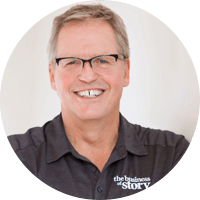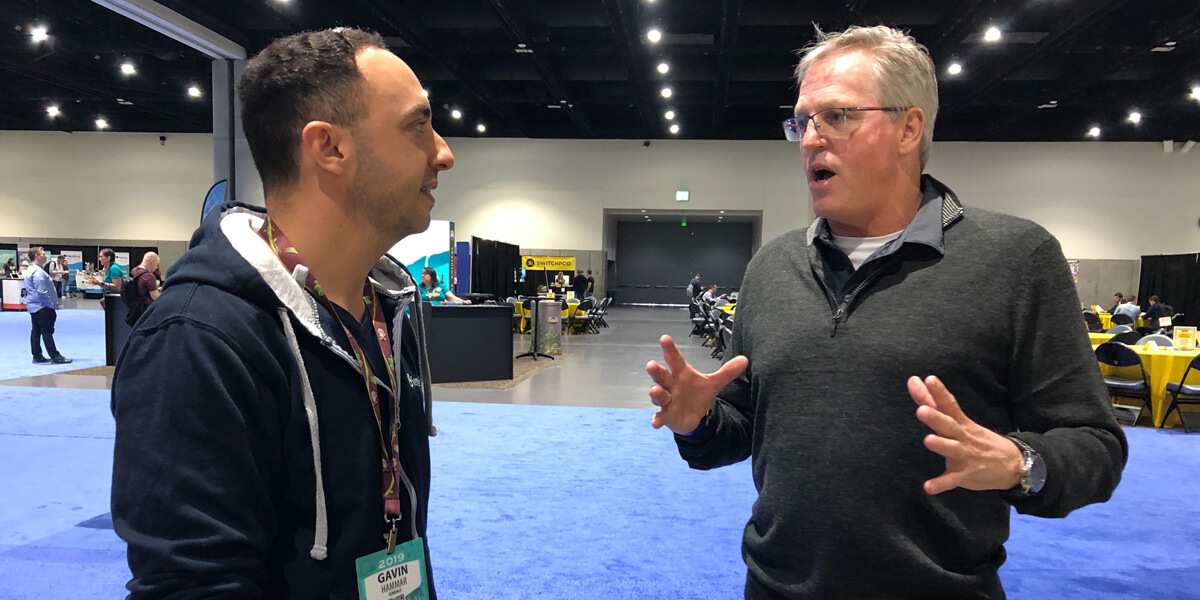Sendible insights [EP #3] Building a Memorable Brand Through Storytelling /w Park Howell
Brand storytelling is key to compelling marketing and communication. Vivid stories cut through the everyday clutter, and make sense to us in the overly saturated, fast-moving world we live in today.
On social media, stories allow us to identify with communities and get one step closer to creating true connections with them.
But it can be hard to tell a cohesive story across multiple social media channels. Increasingly, people don't care about what your brand does or how you do it. They care about why you do what you do!
Therefore, to show you how to use storytelling on social media, we've invited master storyteller, Park Howell to our new 'Sendible Insider' podcast. In this episode, he will share powerful storytelling techniques - from frameworks to exercises you can start doing today!
Listen to the episode now on Spotify or Apple Podcast, or keep reading for the 5-minute text recap and tweetable highlights!
Podcast episode details
What's included in this episode?
Park first met Gavin at Social Media Marketing World, and we are super excited to have him on our 'Sendible Insider' podcast show to talk about storytelling and how it can be applied in marketing and business.
Park has been in advertising for over 35 years - he ran his own agency for 20 years and has been involved in story marketing for the past 10+ years.
He is also the founder of Business of Story, a platform based on proven frameworks that help leaders of purpose-driven brands clarify their story and amplify their impact online.
In this episode, we talk about:
- [01:00] - How Park first discovered the power of storytelling.
- [08:10] - The "And, But, Therefore" and "Setup, Problem, Resolution" storytelling techniques.
- [09:38] - How to show the value of business storytelling.
- [13:28] - How to use social media to tell stories.
- [17:51] - How agencies can surface stories from their clients.
- [18:41] - How to use the OOOH method to source stories within your organisation.
Tune into the episode now on Spotify or Apple Podcast, or scroll down for the highlights.
Takeaways you can share on Twitter
The three #storytelling frameworks you can use to tell better stories:
— Sendible (@Sendible) September 11, 2019
1️⃣ And, But, Therefore
2️⃣ Five primal elements of story
3️⃣ 10-step Story Cycle System
Listen to the full episode here with @ParkHowell 👉 https://t.co/6uCcUbi8Pw #socialmedia
"No matter how you grow as a storyteller and all the different frameworks you use, I want you to always remember that the most potent story you will ever tell is the story you tell yourself - so make it a great." - @ParkHowell
— Sendible (@Sendible) September 12, 2019
⏯ Full episode ➡️ https://t.co/6uCcUbzJH4 pic.twitter.com/5SuDtgqiua
Links and resources
- Business of Story podcast - hosted by Park Howell, is among the best storytelling podcasts and named among 40 Best Small Business Podcasts, and has more than 300,000 downloads.
- Business of Story website - learn more about Park's storytelling techniques, plus explore his tools and resources on his website.
- Free downloadable resources for brands and agencies - check out the useful resources our team has created for social media marketers like you!
Want more content like this? Subscribe to our podcast - new episodes every Monday!
The 5-minute podcast episode recap 👇
#1 - Can you tell us about how you got into story marketing, and what were you doing before?

I've been in the advertising, branding and marketing world for over 35 years. I ran my own ad agency for 20 years which was pretty much a traditional ad agency, making the transition into the digital world while the world was upset with the global recession.
In 2006, we had had a lot of success with brands and building them up through the influence of traditional mass media, including radio, print, outdoor billboards and direct mail events. But digital media was completely disrupting how we communicated internally and externally.
It was a time where I sought to become a more confident and influential communicator on behalf of our brands in this remarkably noisy, digital world, but I didn't know how.
While there wasn't any formal education on the power of story at a time, I was very fortunate because our son, Parker was going to film school in Orange, California. Once he graduated, I asked him to send me his books because I wanted to learn what they teach eager young professionals, wanting to become storytellers and filmmakers in the most competitive filmmaking industry in L.A.
That's when I found story and story structure, and Joseph Campbell's "Hero's Journey", and how this has played out since the beginning of time in the stories that we love. I realised the power of narrative that Hollywood, great writers and musicians use that we, in the business world, don't know as well.
My world completely pivoted in 2006! Ten years later, I stepped away from my ad agency, closed the doors and have focussed solely on Business of Story.
#2 - Why is it that storytelling is more important now than ever to connect with people and move them to action?
We have this marvellous mind. It allows us to do brilliant things from creating the industrial revolution to putting a man on the moon, and creating unbelievable technology that enables us to become our own TV stations and publishers from the comfort of our kitchen table.
But with the latter, has come a lot of noise, resulting in us being constantly pounded with everything—from text to emails to blogs and podcasts—you name it. While we have this capability of expanding technology and delivering messages at a compounding rate, we're not doing a very good job at navigating all of it because this stuff just keeps pounding and ricocheting off of our brains.
Unless, you tell a story with a specific story structure - a lesson with a beginning, middle and an end. Here's an example of one of the frameworks:
I've been in branding marketing for 35 years AND have helped lots of purpose-driven brands grow through the influence of mass media.
BUT technology has completely levelled the playing field. The masses are now the media, and we are all competing in a technology-driven communications world where we are more likely to drown in the noise than to rise above it.
THEREFORE, I now consult, teach, coach and speak on the applied science and bewitchery of storytelling to teach leaders how to tell stories on purpose, and hack through the noise and hook into the hearts of their audiences using the primal power of story.
#3 - How would you teach business owners who don't really understand the value of storytelling?

There's a whole article I'm happy to share with you on the ROI of business storytelling and the cost of being boring! It touches on how storytelling can create significance for otherwise mundane products, the cost of not developing a storytelling culture and much more.
I find I have way more luck working with people who have already have an appreciation for story. There is no university that teaches an MBA on this topic matter which is why I teach three primary frameworks working with Dr Olson:
- The "And, But, Therefore" (ABT for short) narrative framework to set the central theme for a story.
- The five primal elements of story including: Timestamp, Location stamp, Character, Action and Aha.
- My 10-step Story Cycle System to craft more compelling business stories.
#4 - When it comes to storytelling on social media, would you advise brands to craft series of posts to tell a story or tell a story in every post?
What I always like to do is start with the ABT framework, then move on to the five primal elements of story and then, use the Story Cycle System to write out the long-form narrative.
From there, you have more than enough content to work with to create a long-form content piece or split it into smaller chunks and publish them on social media, using the strengths of each channel.
Here's how it could look once you've created a long-form content piece:
- On Twitter, come up with three different ways to talk about the story in the piece, experimenting with formats and content.
- On Instagram, make sure you tell a story not just post a bunch of pictures. Experiment with posting three images in a single post where each image describes your story using the "Setup, Problem, Resolution" technique.
- On LinkedIn, shorten your long-form content by a third or two thirds and republish it as a new piece.
#5 - Are there any triggers that agencies can use to help surface these stories from their clients?
If possible, you can go to your client and tell them you will need 90 minutes of their time. You want to really go through their brand with them. Having the leadership, content team and influencers in the same space would be beneficial.
When you have them in the room, you need to discuss the brand ethos, brand pillars and once agreed, give each member nine post-it notes.
Then, you go to the whiteboard, and you make three columns. I call this the OOOH exercise and each O letter stands for a column:
- O - Organisation
- O - Offering
- O - Outcome
Then, what you do is you ask everyone sitting around the table (without looking at your neighbour's work), write three words for each of the O's on a post-it note.
Later, you put these notes on a whiteboard and have a conversation about the words selected. In the process, you throw out the outliers that don't work and find the ones that people agree on. In the end, you want to have nine, one-word descriptors - three for each one of those columns.
Each of the words serves as an anchor, a theme for your stories. This is a marvellous content creation system because it encourages people to look for true stories about your organisation as well as your offering and the outcomes that they achieve.
Once you've collected the stories in a library, you can sift through and pick out the top ones that best match the particular program or service that you're promoting next.
What this does is it triggers a storytelling culture within the organisation and the idea is to have them keep building on these stories every single week.
For instance, in my organisation, Business of Story, one of our words is 'mage'. Mage is a magician/learned person that is out to help people through the magic of what they know. So that's a fun little operational term that I use about us because we teach the applied science and the bewitchery of storytelling.
Bonus question - Which author, mentor or book has been most influential in your life?
- "Houston, We Have a Narrative" by Randy Olson.
- "Putting Stories to Work" by Shawn Callahan.
- "Writer's Journey" by Christopher Vogler.
🎙️ Want to be the first to listen to our podcasts? Subscribe to the 'Sendible Insider' podcast today!
Text copied!




